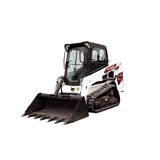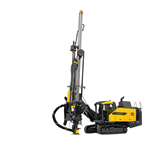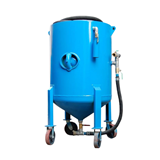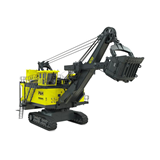Planning to buy or upgrade a drill rig in Australia? This detailed guide breaks down how to cut downtime, manage running costs, and boost ROI with smart maintenance, lifecycle planning, and local compliance know-how.
Key takeaways
- Maintenance matters: Preventive maintenance reduces unexpected repair costs by up to 30% and extends rig life by 20–40%.
- Downtime is expensive: Unplanned downtime can cost up to $12,000 per hour for high-capacity rigs in remote Australian regions.
- Running costs are variable: Operating costs average $150–$500/hour, depending on drill type, terrain, fuel type, and drilling depth.
- Australian compliance is non-negotiable: All drill rigs must meet AS/NZS 4871 standards for electrical equipment and MDG15 guidelines for mining machinery.
- Track TCO (Total Cost of Ownership): Smart tracking systems can improve asset utilisation by 15–25%.
- Right rig, right job: Matching your drill rig type to the specific job scope can improve operational efficiency by up to 30% and reduce unnecessary capital and running costs.
- Plan for capacity and compliance: Choosing rigs with at least 20% excess depth capacity and ensuring Australian compliance standards (MDG15, AS/NZS 4871) reduces costly modifications and downtime.
Introduction
Investing in a drill rig is a significant outlay for Australian mining, construction, and geotechnical firms. But upfront cost is just the beginning. Maximising your drill rig’s ROI (return on investment) depends on how well you manage maintenance, reduce downtime, and control operating costs.
This buying guide is tailored specifically for Australian buyers and operators seeking to make data-informed, long-term decisions. From compliance checklists to cost calculators, this article will equip you with the knowledge to get the best value out of your drill rig investment.
Understanding drill rig ROI in an Australian context
Drill rigs in Australia typically range from $150,000 for small, trailer-mounted rigs to over $5 million for large rotary blasthole rigs. Getting the most value from this investment requires more than just quality machinery.
Key factors affecting ROI:
- Utilisation rate: Idle equipment is costly. Maximising use boosts revenue per rig.
- Maintenance scheduling: Reduces unplanned outages.
- Operator training: Minimises misuse and associated repair costs.
- Parts availability: Local sourcing can reduce delays in repair.
- Environmental adaptability: Suits local conditions like outback heat, red dust, or tropical humidity.
Drill rig maintenance: the foundation of long-term value
Maintenance is the cornerstone of equipment ROI. Inconsistent servicing leads to higher wear and earlier replacement.
Preventive vs reactive maintenance
- Preventive maintenance:
- Scheduled inspections and part replacements
- Fluid and filter checks
- Reduces failure rates and extends machine life
- Reactive maintenance:
- Only occurs after breakdowns
- Leads to higher repair costs and longer downtimes
Maintenance best practices:
- Follow OEM guidelines: Never skip scheduled services.
- Use condition monitoring tools:
- Vibration analysis
- Fluid sampling
- Thermal imaging
- Digital maintenance logs: Track service intervals and performance anomalies
- Use certified parts and service: Avoid warranty voids
Australian cost benchmarks:
- Annual maintenance: 8–12% of the drill rig’s value
- Consumables and filters: $3,000–$10,000/year
- Service contracts: $15,000–$70,000/year depending on drill type
Minimising downtime: every hour counts
Downtime costs can cripple productivity. In Australia’s mining sector, every hour lost on-site can translate to tens of thousands of dollars.
Main causes of downtime:
- Hydraulic failure
- Electrical faults
- Wear of consumables (bits, rods)
- Harsh environmental impact (dust, heat)
Downtime prevention strategies:
- Routine inspection checklists:
- Daily: fluid levels, bolt integrity, hoses
- Weekly: brake systems, hydraulics
- Monthly: electricals, wear parts
- Use telemetry and IoT:
- Predictive analytics using GPS and sensors
- Alerts on impending component failure
- Operator training and SOPs:
- Australian drillers require RIINHB301E and RIIHAN309F competencies
- SOP adherence reduces misuse-related failure by 40%
- Stock common failure parts on-site:
- Hoses, filters, lubricants, sensor kits
- Reduces repair delays in remote locations
Managing drill rig running costs in Australia
Running costs vary significantly depending on terrain, depth, crew experience, and fuel costs.
Common cost components:
- Fuel: Diesel is the largest single cost (25–45% of total OPEX)
- Lubricants and fluids: Hydraulic oil, grease, coolant
- Wear parts: Drill bits, hammers, rods, mud motors
- Labour: Crew and operator wages (typically $90,000–$150,000 annually per operator)
- Logistics: Mobilisation/demobilisation costs
Cost-reduction strategies:
- Select the right rig: Match depth and hole diameter to avoid overkill
- Invest in high-efficiency bits: Extend lifespan and reduce replacement frequency
- Implement fuel management systems: Monitor and control fuel burn
- Shared resource scheduling: Reduce idle times across fleet
Total cost of ownership (TCO): look beyond the sticker price
TCO includes all expenses from purchase to disposal.
TCO breakdown:
- Acquisition cost: 35–40%
- Maintenance: 15–20%
- Operating costs: 30–40%
- Resale value: Offset against depreciation
Tools to track TCO:
- OEM software
- Third-party apps
- Excel-based calculators with input fields for:
- Engine hours
- Fuel consumption
- Part replacement frequency
- Service records
Compliance and certification requirements in Australia
Australian drill rigs must meet rigorous compliance and safety regulations.
Key regulations and standards:
- AS/NZS 4871: Electrical equipment for mines
- MDG15: NSW Mines Design Guideline for Mobile Plant
- AS/NZS ISO 9001: For manufacturers and suppliers
- Site-specific WHS: Must be compatible with state-based Work Health and Safety Acts
Compliance tips:
- Ensure all modifications and retrofits retain compliance
- Maintain documentation of all inspections, incidents, and services
- Operators must have competency certificates under RIINHB training units
Drill rig selection checklist: Matching rig to job scope
Choosing the right drill rig for your specific application is critical to maximising your return on investment. Selecting an oversized rig increases upfront and running costs unnecessarily, while an undersized rig risks inefficiency, equipment failure, and project delays.
When selecting a rig, consider the following:
- Mineral exploration: For deep core sampling, diamond core rigs are the best choice. They typically handle hole diameters from 50 to 120 millimetres and can drill to depths up to 1,500 metres. These rigs are designed to cope with soft to hard rock formations common in Australian mineral fields.
- Blast hole drilling: Rotary or down-the-hole (DTH) rigs are ideal for creating larger diameter holes (150 to 400 millimetres) with typical depths between 10 and 70 metres. These rigs are suited for hard rock mining conditions often encountered in Australian mines.
- Piling and foundation work: Auger or rotary rigs that handle wide hole diameters (300 to 1,200 millimetres) and depths up to 40 metres are appropriate for soil types like clay, sand, or mixed terrains prevalent in construction sites.
- Geotechnical investigations: Light rotary rigs or cone penetration testing (CPT) rigs, with hole diameters generally between 50 and 100 millimetres and depths ranging from 10 to 100 metres, are well-suited for urban and variable environments.
- Water bore drilling: Rotary mud or air rigs that manage 100 to 400 millimetre holes and depths from 50 to 600 metres are typically used in rural or remote locations for water supply drilling.
Other important factors to keep in mind when selecting a rig:
- Depth capacity: It’s wise to choose a rig with at least 20% more capacity than your maximum planned drilling depth to avoid limitations and allow for unforeseen conditions.
- Hole diameter compatibility: Ensure the bit size matches your casing and intended purpose to maintain efficiency and rig health.
- Mobility: Truck-mounted rigs allow rapid mobilisation between sites, while track-mounted rigs provide better stability on rough terrain common in many Australian mining and construction areas.
- Power source: Diesel-powered rigs dominate in remote Australian regions for their independence from power grids, but electric or hybrid rigs are gaining traction in urban zones or environmentally sensitive areas.
- Compliance: Confirm the rig complies with Australian regulations such as the Mining Design Guideline 15 (MDG15) and electrical standards AS/NZS 4871, especially for use on mine sites.
Pro tip: Many Australian operators find modular rigs advantageous. Their flexibility to be reconfigured for different drilling methods or hole sizes can increase asset utilisation by up to 30% over the rig’s lifespan.
Warranty, resale and lifecycle value tips
When buying a drill rig, understanding warranty coverage and resale value plays a vital role in protecting your investment and maximising ROI, especially in Australia’s challenging operational environments.
Warranty considerations:
Standard manufacturer warranties generally cover defects in parts and workmanship for 12 to 36 months. Some suppliers offer extended warranties that include parts and labour coverage for up to five years, often at an additional cost. For diesel rigs, powertrain components such as engines, transmissions, and hydraulic systems may have specific warranty coverage.
Many extended warranties require servicing to be carried out through certified dealers, encouraging proper and regular maintenance. Using genuine OEM parts and approved lubricants is essential to maintain warranty validity. Additionally, keeping a comprehensive, preferably digital, maintenance log is often a condition of extended warranties.
Avoid modifying the rig’s operating systems or load capacities without prior approval, as this can void warranty protections.
Resale value and lifecycle optimisation:
A well-maintained drill rig in Australia typically retains between 40% and 60% of its original purchase price after five to seven years of operation. Conversely, rigs with inconsistent maintenance records or lacking documentation can drop below 25% of their original value in the same timeframe.
To maximise resale value, follow these best practices:
- Maintain detailed service histories and digital logs, which can increase resale prices by 15% to 20% by providing buyers with confidence in the machine’s condition.
- Plan to sell rigs before major, costly overhauls are required, commonly around 70% to 80% of the rig’s estimated operational lifespan. This prevents expensive component replacement costs from reducing overall asset value.
- Keep the rig clean and properly stored, especially before auction or resale inspections. Cosmetic condition can heavily influence buyer perception and final price.
Did you know? Drill rigs sold in Australia with verified service histories and operational telematics data can command up to $80,000 more at mining equipment auctions, according to Pickles Industrial data from 2024.
Common buyer questions answered
What size drill rig do I need?
Depends on the job type:
- Geotechnical: Trailer-mounted, light rotary rigs
- Blast hole mining: Large, track-mounted rotary rigs
- Exploration: Core drill rigs with deep-hole capability
What is the typical lifespan of a drill rig?
- With proper maintenance: 10–20 years
- Without structured servicing: may degrade in under 7 years
Can I finance a drill rig in Australia?
Yes. Options include:
- Equipment loans
- Operating leases
- Chattel mortgages (with potential GST benefits)
Are used rigs worth considering?
Yes, but check:
- Hours on the clock
- Maintenance history
- Compliance to current Australian standards
Conclusion: Building long-term value from your drill rig
Maximising ROI on a drill rig in Australia isn’t just about getting the lowest price – it’s about minimising unplanned costs, prolonging equipment life, and ensuring consistent performance in harsh operating conditions.
Buyers who invest in preventive maintenance, align operations with compliance standards, and track total cost of ownership can see significant savings over the life of the asset. As the market evolves and telematics technology improves, those who invest in smart rig management will stay ahead.
Whether you’re drilling in the Pilbara or near the Snowy Mountains, strategic ownership is your competitive edge.


-160x160-state_article-rel-cat.png)

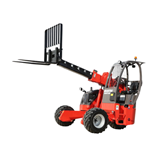

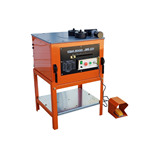
-160x160-state_article-rel-cat.png)
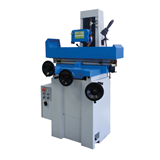
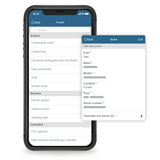
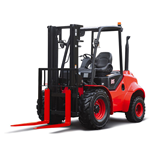

-160x160-state_article-rel-cat.png)
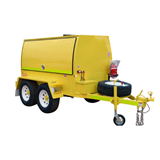
-160x160-state_article-rel-cat.png)


